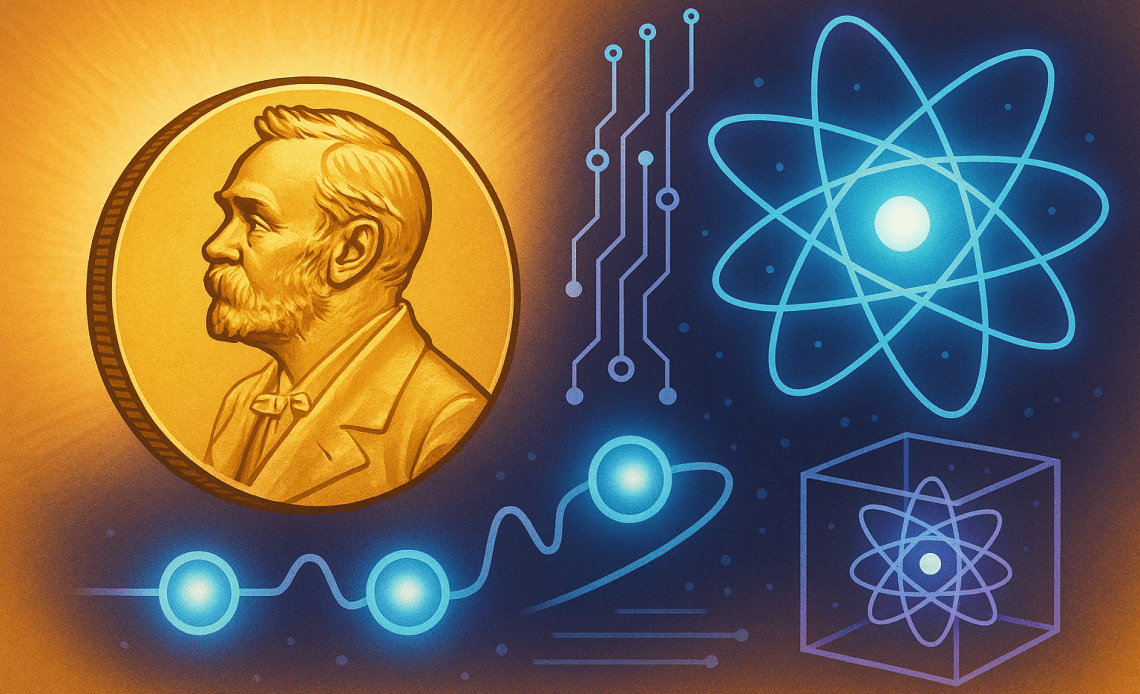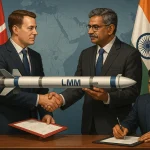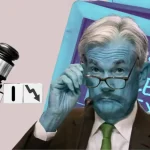The 2025 Nobel Prize in Physics has been awarded to John Clarke, Michel H. Devoret, and John M. Martinis for discoveries that brought quantum mechanics from theory to tangible circuits.
Their work on macroscopic quantum mechanical tunnelling and energy quantisation in electric circuits has set the foundation for next-generation technologies like quantum computers, cryptography, and sensors.
Announced by the Royal Swedish Academy of Sciences in Stockholm on Tuesday, 7 October 2025, the prize recognises discoveries that bridge the microscopic world of quantum physics with real-world applications across computing and communication.
Quantum discoveries that power modern technology
The awarded research focuses on how quantum mechanics, once limited to atomic and subatomic particles, can manifest in visible and measurable circuits.
Clarke, Devoret, and Martinis’ work demonstrated that quantum behaviour such as tunnelling and energy quantisation could occur in superconducting circuits — the same principle behind the development of qubits used in quantum computers.
According to the Nobel Committee for Physics, these findings have become key in advancing “the next generation of quantum technology.”
Devices powered by quantum principles now underpin encryption systems, ultra-sensitive sensors, and high-speed computing platforms.
The discoveries made decades ago continue to influence global research into quantum engineering, which has become central to the technological race among major economies.
Quantum computers based on such principles are already being developed by leading technology companies and research institutions.
From theory to application: a century of quantum evolution
Quantum mechanics, developed in the early 20th century, laid the groundwork for digital technology through the invention of transistors — tiny switches that power computer chips.
The Nobel Committee highlighted that while transistors revolutionised electronics, the 2025 Physics Prize honours a transition to “macroscopic quantum” systems that move beyond classical limits.
This means quantum phenomena — once observable only at the smallest scales — can now be engineered to operate in everyday-sized devices.
The breakthroughs by Clarke, Devoret, and Martinis represent one of the most practical extensions of quantum theory since its inception, enabling faster, more secure, and more powerful digital systems.
Olle Eriksson, Chair of the Nobel Committee for Physics, described this year’s award as a recognition of “century-old quantum mechanics offering new surprises and usefulness.”
His remarks emphasised that these principles remain vital to innovation across industries.
Continuing the Nobel tradition of transformative science
Last year’s Physics Nobel was awarded to John J. Hopfield and Geoffrey Hinton for foundational discoveries that enabled machine learning with artificial neural networks — linking physics and artificial intelligence.
The 2025 prize builds on that tradition by honouring scientific milestones that extend far beyond academia into the commercial and digital spheres.
The Royal Swedish Academy of Sciences began the week of Nobel announcements with the Medicine Prize on Monday, shared by Mary E. Brunkow, Fred Ramsdell, and Shimon Sakaguchi for identifying regulatory T cells that safeguard the immune system.
The Chemistry Prize will follow on 8 October, while Literature, Peace, and Economic Sciences will be announced on 9, 10, and 13 October, respectively.
Each Nobel Prize includes a cash award of 11 million Swedish kronor (approximately ₹1.03 crore), with the formal presentation scheduled for 10 December in Stockholm — the anniversary of Alfred Nobel’s death.
The Nobel Prizes, established by Swedish inventor Alfred Nobel, recognise individuals and organisations whose work confers “the greatest benefit to humankind.”
Over a century since their inception, they continue to celebrate research that redefines the limits of human knowledge and transforms the global scientific landscape.
The post Nobel Prize 2025: how these scientists turned quantum theory into reality appeared first on Invezz







